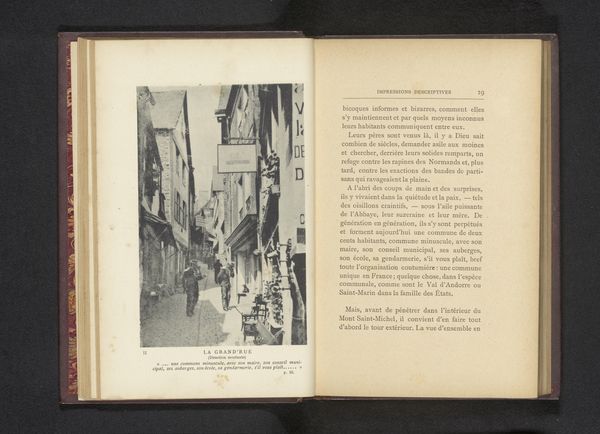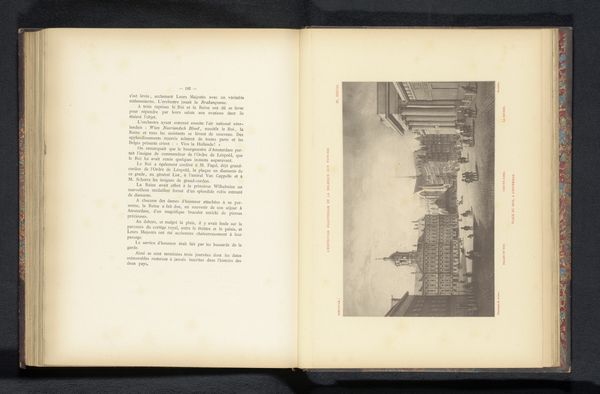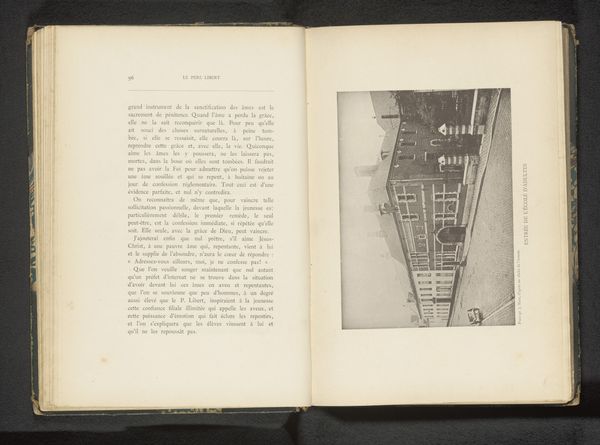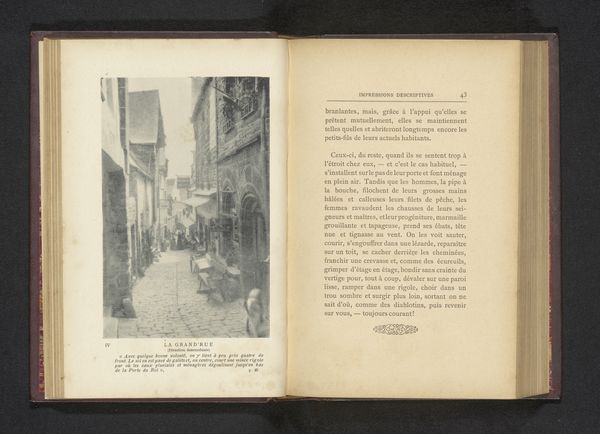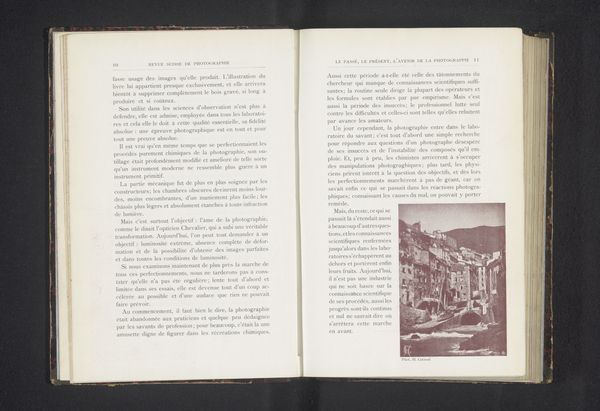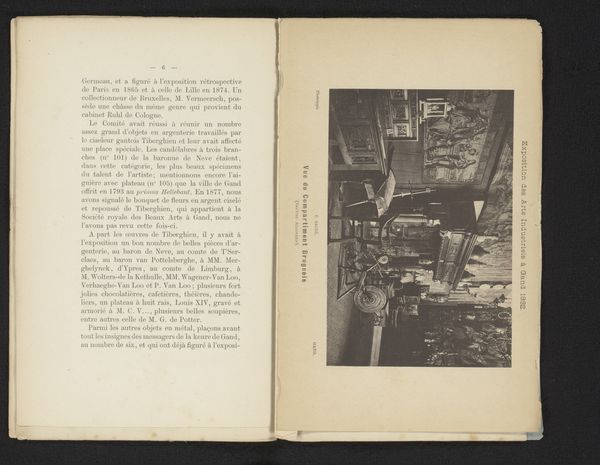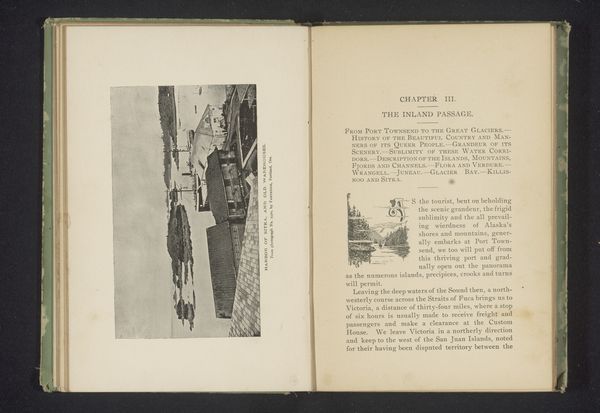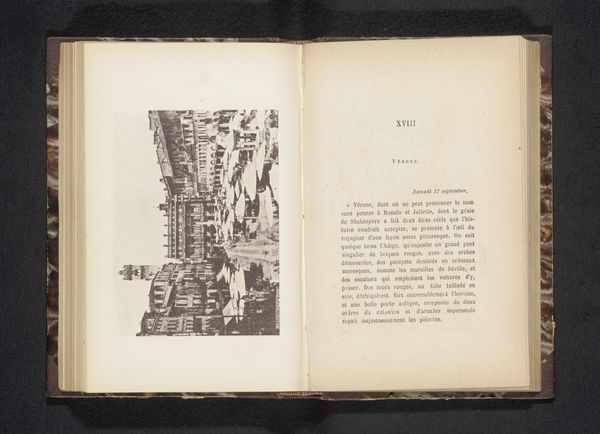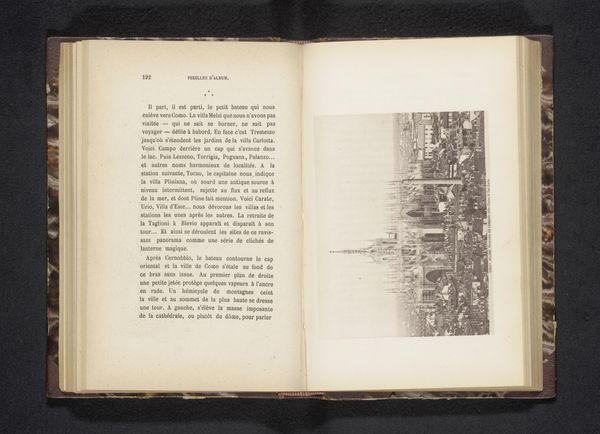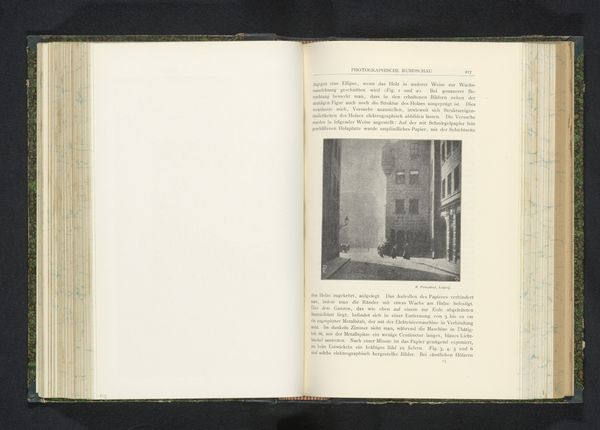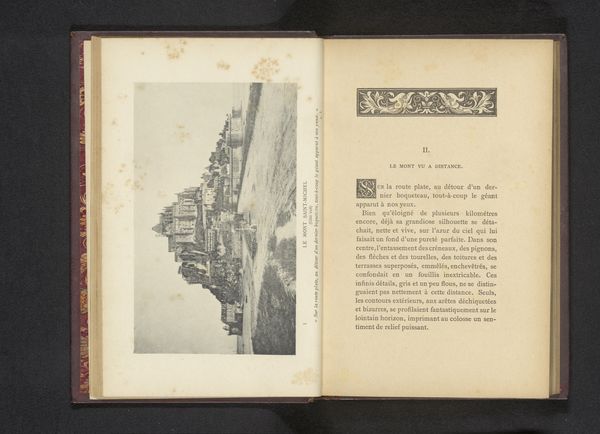
print, photography
# print
#
landscape
#
street-photography
#
photography
#
cityscape
#
street
#
realism
Dimensions: height 131 mm, width 93 mm
Copyright: Rijks Museum: Open Domain
Curator: The work before us is a photograph, titled "Gezicht op de Via Cappello en Casa di Giulietta"—"View of Via Cappello and Juliet's House," if we translate from the Dutch. It was captured sometime before 1889 by an anonymous artist, preserved in a print. Editor: There’s something hauntingly melancholic about this scene. The heavy shadows cutting across the street, the density of the architecture…it almost feels stage-like. What strikes you formally? Curator: I'm intrigued by the interplay of light and shadow you mentioned. Note how the photographer uses these contrasts to create a powerful diagonal composition, directing our eye through the narrow street towards the blurred figures in the distance. The linear perspective, accentuated by the buildings' facades, adds a distinct depth. Editor: And the building of course, we have Juliet’s house and its implied stories of love, of destiny. You have to wonder, don’t you, how many visitors sought to connect with that cultural legacy even then, judging by the crowds it evokes? The photograph certainly makes visible how this place of history carries with it those emotional weights. The repetition of archways in the background alludes to that continuous narrative over time. Curator: A key formal aspect to observe is how the relatively tight focal length compresses the scene, creating a sense of claustrophobia—almost as if we, the viewers, are caught within the unfolding street view, furthering that heavy visual impact you describe. It contributes significantly to the photographic work's texture. Editor: And perhaps contributing also to the symbolic feeling that time, culture and tourism become so intertwined it nearly squeezes the very life out of the present, no? Even then you know these old settings have been re-set in this photograph, for viewing by generations more removed than those who were originally witness. Curator: That's a rather persuasive reading; though one could also argue that the artist sought merely to objectively document a moment in time—a 'snapshot' capturing Verona's urban morphology. Editor: Though even a snapshot has intent. Seeing this has, in fact, provided a lens—pun intended, I suppose—for considering how places accrue emotional narratives across decades. Curator: Agreed. Thinking of its geometry and how we understand linear and spatial features adds a layer, yes, that reveals our human need to experience those symbol-rich places.
Comments
No comments
Be the first to comment and join the conversation on the ultimate creative platform.
